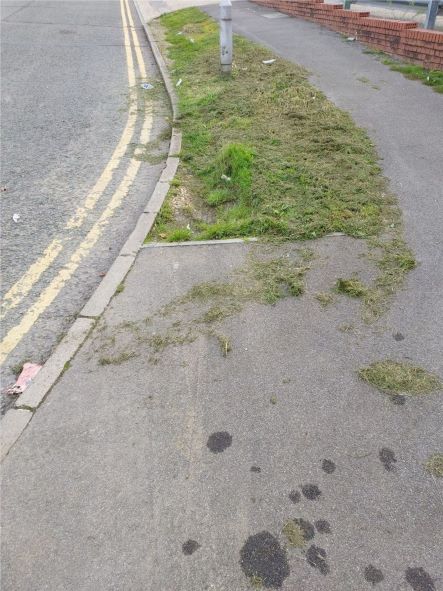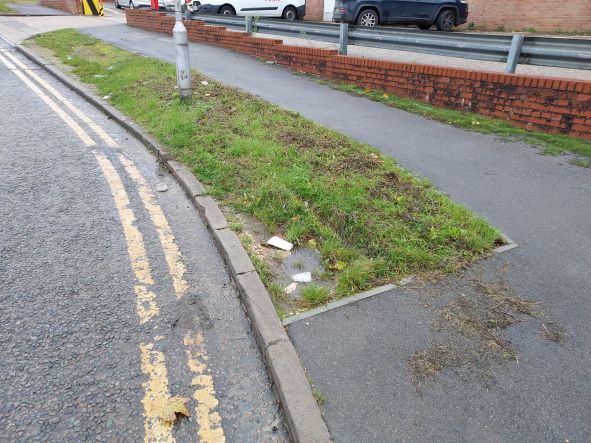The Humble Beginnings of a Weed and How to Avoid Them
Hard surfaces are inhospitable environments for a weed, so how exactly do they get established there and what can be done to prevent it?
How our Verge Management Contributes to Weeds on Adjoining Hard Surfaces
Over recent years, parks and street teams in councils have had their budgets cut, so grass on verges are often being cut less frequently to save money. To cope with the longer grass, councils are using flail mowers and often cutting long grass down to just a few cm in height.
This is problematic in the long run.
When purchasing mulching equipment, customers would normally be advised to take off no more than a third or so of the total length of the grass. This is because when this practise is followed, the cuttings can be dispersed into the remaining grass and provide healthy mulch for the remaining plants and even prevent some weeds. Thicker layers have a tendency to remain too wet and can invite mold and create smelly decay issues. Aside from this, far more grass will end up escaping the area where the grass in supposed to be contained. As shown in the picture below.

The grass that spills over onto the road and pavement will obscure road markings, but it will also degrade into soil, becoming a perfect seed bed for weeds. (Requiring more weed treatments to rectify). I'll show you how this starts below.
The council has a duty to keep the road clear of litter and detritus according to section 89 of the Environmental Protection Act. The code of practice can be found here; If a Council is creating this kind of mess, it should be picking it up, not leaving it there to degrade. However, this legislation is widely ignored, so after a week or so we end up with the following situation.

The grass has already begun composting (picture taken only 1 week later). In drier conditions more of the grass would normally be blown into the kerb and back to the edge of the existing grass line, which is where you usually start to see weeds emerge on hard surfaces. In this case, as it is heavier, much of the grass has simply started to degrade where it fell. Each time the grass is cut, more of this organic matter will build up providing a fertile bed for weeds.
Weeds can use this fertile environment to get established on the hard surface. especially where the road meets the paving stones and on the edge of the existing grass.
Using a mower that can collect the grass - or sweeping up the material - or even using a different plant on the verge (requiring less mowing) would solve the problem, which will instead likely be "fixed" by spraying next year after the weeds have become established and started doing further damage to the tarmac.
How Spraying instead of Removing Soil Build Up adds to the Weed Problem on Hard Surfaces
After the weeds are sprayed, the story doesn't improve. The dead weeds add further to the soil build up at the site and a larger range of weeds are able to grow back next time, becoming more and more difficult to manage. „Soil depth can greatly influence the types of plants that can grow in them. Deeper soils generally can provide more water and nutrients to plants than more shallow soils. Furthermore, most plants rely on soil for mechanical support and this is especially true for tall woody plants (e.g., shrubs, trees).
An alternative solution can be seen below.
Information from http://www.newutahgardener.com/2015/04/ground-cover-thymes-for-utah.html
Ground Cover Thymes to Prevent Weeds on Hard Surfaces

ground cover thymes in a park strip in Salt Lake City, Utah
Ground cover thymes can be a great choice for park strips, patios and pathways. Ground cover thymes are fragrant like regular thymes, but they creep and spread out and can fill the spaces between stepping stones and pavers. While they can tolerate some foot traffic, they are not as durable as turf grass so they are not recommended as a lawn substitute unless you can guarantee low traffic of people or dogs are going to run and play on it. Verges next to pavements can fit the bill, as long as traffic is encouraged not to park on the verge. Some varieties will bloom in spring and summer and will create stunning carpets of TINY pink flowers, which are great for bees and other pollinators. Ground cover thymes stay almost flat on the ground and will continue to spread year after year. They need water only during the hottest times of summer; June through August. Plant them in full sun or part shade. Sometimes the older parts of the plants die out and need to be replaced, but far less frequently than some other options such as wild flower meadow mixes. There are many varieties of ground cover thyme to choose from eg. woolly thyme, elfin thyme, pink chintz thyme, etc.
This solution would likely only need trimming around the edges once per year to keep it within the boundaries of the verge. It would provide a much better environment for pollinators such as bees and far less detritus for weeds to become established on the adjoining hard surfaces.
There are quite a few different ground cover species that might be used to suit different soil types and locations, not only Thyme.
Once this is established, it would make sweeping and other maintenance operations much easier to keep on top of and therefore more likely to be done.
For more information on Integrated Weed Management check out our Integrated Weed Management for Amenity page.
No comments yet. Login to start a new discussion Start a new discussion